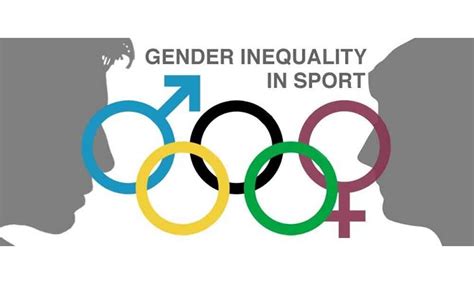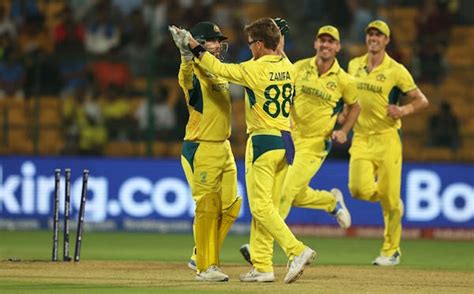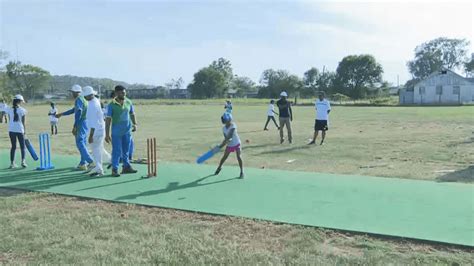Explore the journey of gender equality in sports, focusing on cricket’s role, challenges faced, and inspiring success stories of female athletes breaking barriers.In recent years, the spotlight has intensified on the vital role that sports play in promoting gender equality, with cricket emerging as a powerful platform for this movement. This article delves into cricket’s unique ability to challenge traditional gender norms and empower women in sports, tracing the historical context of gender equality and examining the strides made within the cricketing world. From grassroots initiatives that aim to engage young female athletes to inspiring success stories of women who have shattered the glass ceiling in the sport, we will explore both the progress achieved and the ongoing challenges that remain. As we navigate the future of gender equality in sports, cricket stands poised to lead the charge, fostering inclusivity and inspiring the next generation of female athletes. Join us as we uncover the transformative impact of cricket in breaking barriers for women in sports.
The Historical Context of Gender Equality in Sports
The journey toward gender equality in sports has evolved significantly over the years, reflecting broader societal changes and debates surrounding women’s rights. Historically, sports were predominantly male-dominated, often sidelining women’s participation due to cultural norms and traditional gender roles.
In the early 20th century, women began to assert their presence in various sports, though they faced significant resistance. The 1920s marked a pivotal era, as women competed in major events like the Olympics; however, they were often relegated to a select few sports, such as tennis and swimming. These initial steps laid the groundwork for future advocacy and change.
It wasn’t until the late 20th century that the movement for gender equality in sports gained momentum. The passage of Title IX in the United States in 1972 was a landmark moment, mandating equal opportunities in education and athletics for all genders. This legislation sparked a transformation in collegiate sports, increasing female participation and investment in women’s programs across the board.
In many countries, sporting organizations began to establish women’s leagues and encourage competitive opportunities for female athletes. However, disparities remained pervasive in funding, media coverage, and recognition compared to male counterparts. Ongoing advocacy by athletes and organizations has been crucial in challenging these inequalities and pushing for systemic changes.
Today, while significant strides have been made, the quest for comprehensive gender equality in sports continues. The foundations laid over decades highlight the importance of sustained efforts to empower female athletes and ensure equitable treatment in all facets of the sporting world.
Cricket’s Impact on Women’s Participation in Sports
Cricket has emerged as a powerful vehicle for promoting gender equality in sports, significantly encouraging women’s participation at various levels. Historically, sports have often marginalized women, but the rise of women’s cricket has begun to challenge these norms and create a more inclusive environment.
One of the most notable impacts of cricket on women’s sports participation is the increased visibility and recognition of female athletes. Major cricket boards and organizations have started investing in women’s leagues, tournaments, and professional contracts, providing female cricketers with the resources and platform needed to excel. Events like the Women’s T20 World Cup have attracted large audiences, showcasing the talent and skills of women cricketers and helping to shift public perception.
Moreover, initiatives within cricket, such as grassroots programs and community engagements, have motivated young girls to take up the sport. By providing access to training facilities, coaching, and competitive play, these initiatives are crucial in breaking down barriers and fostering a culture of gender equality in sports.
As more women break into the professional cricket scene, they serve as role models for aspiring athletes. Their success stories not only inspire other women but also challenge existing stereotypes about women’s capabilities in sports. This ripple effect is vital in creating a more inclusive sports culture and encouraging sportsmanship among young girls globally.
Cricket’s influence on women’s participation in sports is profound and multi-faceted. By driving initiatives that promote inclusive access, enhancing visibility, and nurturing talent, cricket is playing a pivotal role in advancing gender equality in sports and empowering the next generation of female athletes.
Initiatives Promoting Gender Equality in Cricket
Several initiatives have emerged in recent years aimed at promoting gender equality in sports, particularly within the realm of cricket. These programs not only support female athletes but also foster a broader cultural shift within the sport. Below are some of the key initiatives making strides towards gender equality in sports through cricket:
- Women’s T20 Leagues: The establishment of various Women’s T20 leagues worldwide, such as the Women’s Big Bash League (WBBL) and The Hundred, has created platforms where female cricketers can showcase their talent, leading to increased visibility and support for women in the sport.
- Development Programs: Many cricket boards have launched development programs aimed at young girls, focusing on skill development and providing resources to nurture future talent. These programs are essential for building a strong foundation for women’s cricket.
- Sponsorship Initiatives: Increasing sponsorship deals for women’s cricket teams have significantly improved financial support, allowing for better training facilities and competition opportunities. Corporate interest is pivotal in promoting female involvement in cricket.
- Awareness Campaigns: Various awareness campaigns, such as This Girl Can, have focused on promoting female participation in sports. These campaigns challenge stereotypes and highlight the importance of inclusivity in sporting activities.
- Equal Pay Movements: The push for equal pay in cricket has gained traction, with initiatives aiming to close the pay gap between male and female players. Organizations are advocating for fair compensation to reflect the efforts and skills of female athletes.
Through these initiatives, the fight for gender equality in sports is becoming increasingly prominent, enabling female cricketers to inspire future generations and breaking down barriers that have long existed in the world of sports.
Success Stories: Female Cricketers Breaking Barriers
The landscape of cricket has seen remarkable transformations over the years, particularly regarding the role of women players. Today’s female cricketers are not just athletes; they are trailblazers whose achievements resonate far beyond the cricket field. These pioneering women are instrumental in promoting gender equality in sports, inspiring young girls around the world to pursue their athletic dreams.
One of the most notable figures is Ellyse Perry, an Australian cricketer who has excelled in both cricket and soccer. Her dual athletic prowess has challenged stereotypes about women in sports, showing that with talent and determination, boundaries can be transcended. Ellyse’s accomplishments have garnered media attention and increased visibility for women’s sports, driving the conversation around gender equality in sports to the forefront.
Another extraordinary story comes from Mithali Raj, an iconic figure in Indian cricket who has amassed numerous records, including being the highest run-scorer in women’s international cricket. Mithali’s journey demonstrates the importance of representation; her leadership and success have inspired countless young women in India and beyond to take up cricket, illustrating that women can achieve greatness in a traditionally male-dominated sport.
Moreover, the rise of the Women’s Big Bash League in Australia has provided a platform for emerging talent. Stars like Beth Mooney and Sophie Molineux have not only showcased their skills but have also contributed to a shift in societal attitudes towards women’s sports. Their popularity within this league emphasizes that female cricketers can captivate audiences, challenging the notion that cricket is solely a sport for men.
These success stories highlight how female cricketers are breaking barriers and paving the way for a more equitable future in sports. As they continue to achieve great things, they personify the ongoing fight for gender equality in sports, inspiring future generations to dream bigger and push through societal limitations.
Challenges Facing Gender Equality in Sports Today
Despite the progress made in recent years, significant challenges still hinder gender equality in sports. These hurdles encompass various factors, including societal perceptions, inadequate funding, and persistent stereotypes.
One of the primary challenges is the lingering societal perception that sports, particularly physically demanding ones, are more suited for men than women. This deeply rooted belief can discourage young girls from pursuing sports, thereby limiting their opportunities for participation and growth. Furthermore, the media often perpetuates these stereotypes, focusing primarily on male athletes and relegating female athletes to the sidelines.
Inadequate funding for women’s sports remains another crucial challenge. Women’s teams often receive significantly less financial support than their male counterparts, which affects their training, facilities, and development platforms. This disparity results in fewer opportunities for women to compete at the highest level and can inhibit the growth of gender equality in sports.
| Challenges | Impact on Gender Equality |
|---|---|
| Societal Perceptions | Discourages female participation |
| Inadequate Funding | Limits training and competition |
| Stereotypes | Perpetuates inequalities in media coverage |
Additionally, there are systemic issues within sporting organizations that often undervalue women’s contributions to their respective fields. This can lead to a lack of representation in leadership roles, further exacerbating the struggle for gender equality in sports.
Prevailing cultural and institutional barriers often make it difficult for women athletes to gain the recognition and respect they deserve. As a result, many female athletes find themselves fighting not only for their place in sports but also for recognition of their achievements.
Addressing these challenges is crucial for advancing gender equality in sports and ensuring that female athletes receive the same support and opportunities as their male counterparts.
The Future of Gender Equality in Sports Through Cricket
The landscape of sports continues to evolve, and cricket is poised to play a pivotal role in fostering gender equality in sports. As the world increasingly recognizes the importance of inclusivity and representation, cricket’s governing bodies, clubs, and communities are embracing initiatives that champion female participation and leadership in the sport.
One of the most promising aspects of the future of gender equality in cricket is the growing visibility of women’s leagues and tournaments. The establishment of professional leagues, such as The Women’s Premier League in India and various Women’s Big Bash League formats, provides female athletes with lucrative platforms to showcase their talent. These leagues not only enhance competition but also inspire young girls to pursue careers in sports, which can lead to a larger talent pool and increased support for women in cricket.
Moreover, the integration of gender equality in sports into grassroots programs will be essential. Initiatives that introduce cricket to young girls at an early age will create a culture of inclusivity. Schools and community organizations must work together to ensure access to training facilities, equipment, and coaching, promoting the notion that cricket is a sport for all, regardless of gender.
Corporate partnerships are also vital for sustaining these advancements. Sponsorship and funding directed towards women’s cricket can empower teams and leagues to grow. As financial viability improves, it can lead to greater media coverage, higher attendance at matches, and increased merchandising, further solidifying women’s cricket’s place in the sporting landscape.
Furthermore, engaging male athletes as allies in promoting gender equality in sports can amplify these efforts. By leveraging their influence, male cricketers can advocate for equality, breaking down stereotypes and encouraging a more supportive environment for their female counterparts.
The focus on policy change within sporting organizations is crucial for establishing lasting change. Policies that prioritize gender equality in sports, such as equitable pay, equal facilities, and representation in coaching and administrative roles, will help dismantle systemic barriers that have historically hindered female athletes.
As cricket moves forward, the amalgamation of these efforts has the potential to not only transform the sport but also serve as a model for other sports, highlighting that inclusivity is the cornerstone of a successful and dynamic sporting community.
Frequently Asked Questions
How has cricket contributed to promoting gender equality in sports?
Cricket has created platforms for women to showcase their talent, encouraging more female participation and providing visibility for women’s achievements in sports.
What initiatives exist to support women in cricket?
Various initiatives, such as women’s leagues, scholarship programs, and coaching clinics, have been established to support and promote the growth of women’s cricket.
Can you provide examples of female cricketers who have made a significant impact?
Players like Mithali Raj and Ellyse Perry have made significant contributions to the sport, breaking records and inspiring young female athletes around the world.
What is the current state of women’s cricket globally?
Women’s cricket is gaining momentum globally, with more countries investing in their women’s teams and international competitions, leading to increased visibility and support.
How do media representations affect women’s cricket?
Media coverage plays a crucial role in shaping perceptions of women’s cricket, with increased visibility helping to challenge stereotypes and attract sponsorship and support.
What role do schools play in encouraging girls to play cricket?
Schools are pivotal in promoting cricket among girls by offering training programs and encouraging participation, thereby fostering a new generation of female cricketers.
How can fans support gender equality in cricket?
Fans can support gender equality in cricket by attending women’s matches, promoting women’s cricket on social media, and advocating for equal pay and opportunities for female athletes.









